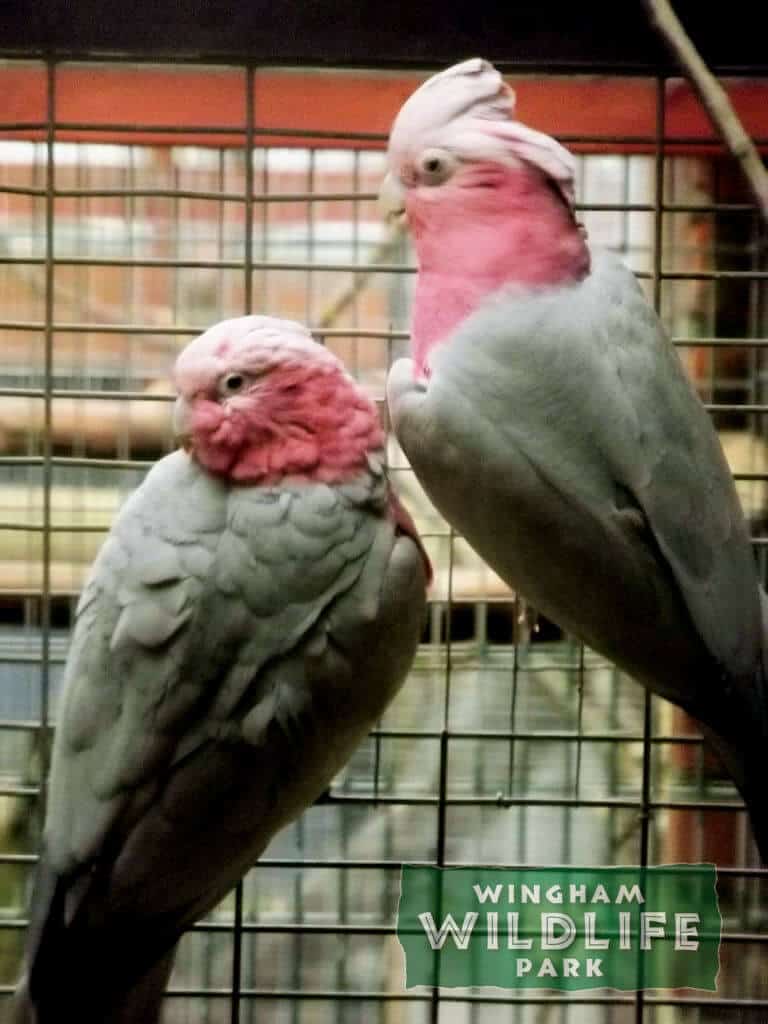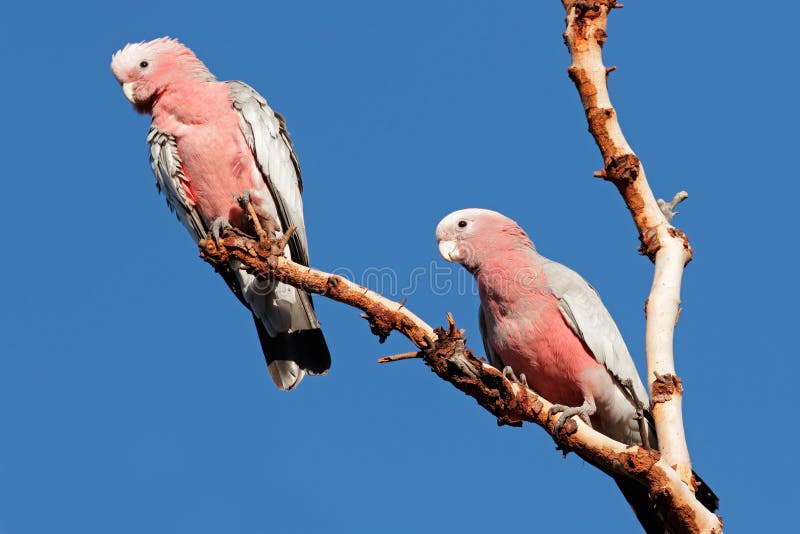

Living in captivity, galahs have been recorded reaching up to 72 years of age when a good-quality diet is strictly followed. The chicks leave the nest about 49 days after hatching. The eggs are incubated for about 25 days, and the male and female share the incubation. The eggs are white, usually two to five in a clutch.

albiceps displaying her crest outside her nest in Tasmania, Australia Idly, it will strip leaves and barks from trees, and large flocks have been observed to kill trees through defoliation. The galah feeds on seeds gathered on the ground, mainly feeding in the morning and late afternoon. Flocks of independent juvenile galahs will often disperse from their birth flock haphazardly. Flocks of galahs often congregate and forage on the ground for food in open, grassy areas. The galah readily hybridizes with all of these species (see below). These can be mixed flocks, the members of which may include Major Mitchell's cockatoo, the little corella, and the sulphur-crested cockatoo. The galah is often found in flocks of 10 to 1,000 individuals. kuhli, found right across the northern part of the continent, tends to be a little smaller and is distinguished by differences in the shape and colour of the crest, although its status as a valid subspecies is uncertain. Most pet birds outside Australia are the south-eastern form. roseicapilla, although the extent and nature of the central hybrid zone remains undefined. albiceps, is clearly distinct from the paler-bodied Western Australian nominate subspecies, E. Slight variation exists in the colours of the plumage and in the extent of the carunculation of the eye rings among the three subspecies. The significance of these two (and other) characteristics shared by the Cacatuinae had previously been explained away in earlier studies by strict application of parsimony on misinterpreted data. Today, the galah is seen, along with Major Mitchell's cockatoo, as an early divergence from the white cockatoo lineage, which has not completely lost its ability to produce an overall pink (Major Mitchell's) or pink and grey (galah) body plumage, while already being light in colour and non-sexually dimorphic.

It fell to the study of Brown & Toft (1999) to compare the previously available data with their mitochondrial 12S rRNA sequence research and resolve the issue. Ignorance of this fact, however, led to attempts to resolve the evolutionary history and prehistoric biogeography of the cockatoos, which ultimately proved fruitless because they were based on invalid assumptions to start with. In consequence, the ancestors of the galah, the cockatiel and Major Mitchell's cockatoo were thought to have diverged from the main white cockatoo line at some stage prior to that group's main radiation this was indeed correct except for the placement of the cockatiel. Early DNA studies allied the galah with the cockatiel or placed it close to some Cacatua species of completely different appearance. Obvious morphological similarities are shared between the galah and the white cockatoos that make up the genus Cacatua and indeed the galah was initially described as Cacatua roseicapilla.

It was separated in the monotypic genus Eolophus, but the further relationships were not clear. The classification of the galah was difficult. The changes brought by European settlement, which have been disastrous for many species, have been highly beneficial for the galah, because of the clearing of forests in fertile areas and the provision of stock-watering points in arid zones. While it is mostly found in inland areas, the galah is rapidly colonising coastal regions. It is common in all habitats in its range except for dense forests, especially those with high rainfall. It is common in metropolitan areas such as Adelaide, Perth, and Melbourne, and abundant in open habitats that offer at least some scattered trees for shelter. A large population expansion occurred in the 1960s following many escapees from captivity. The galah has been introduced to Tasmania through anthropogenic means and there were no sightings prior to 1848. The galah can be found throughout Australia, and is absent only from the driest areas and the far north of Cape York Peninsula.


 0 kommentar(er)
0 kommentar(er)
